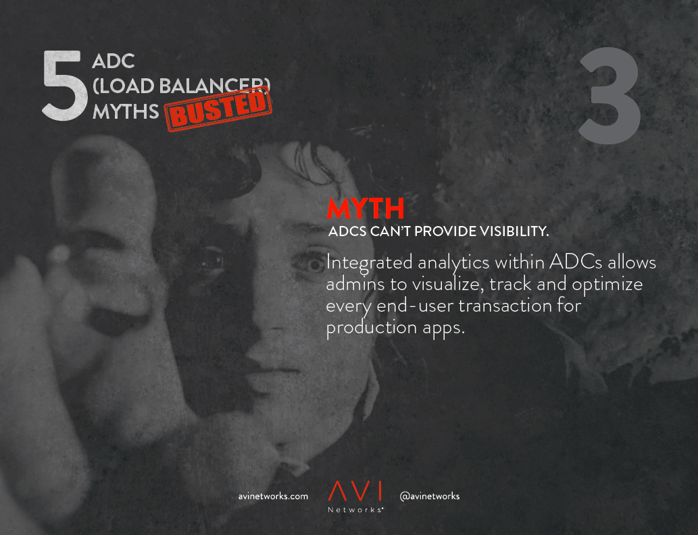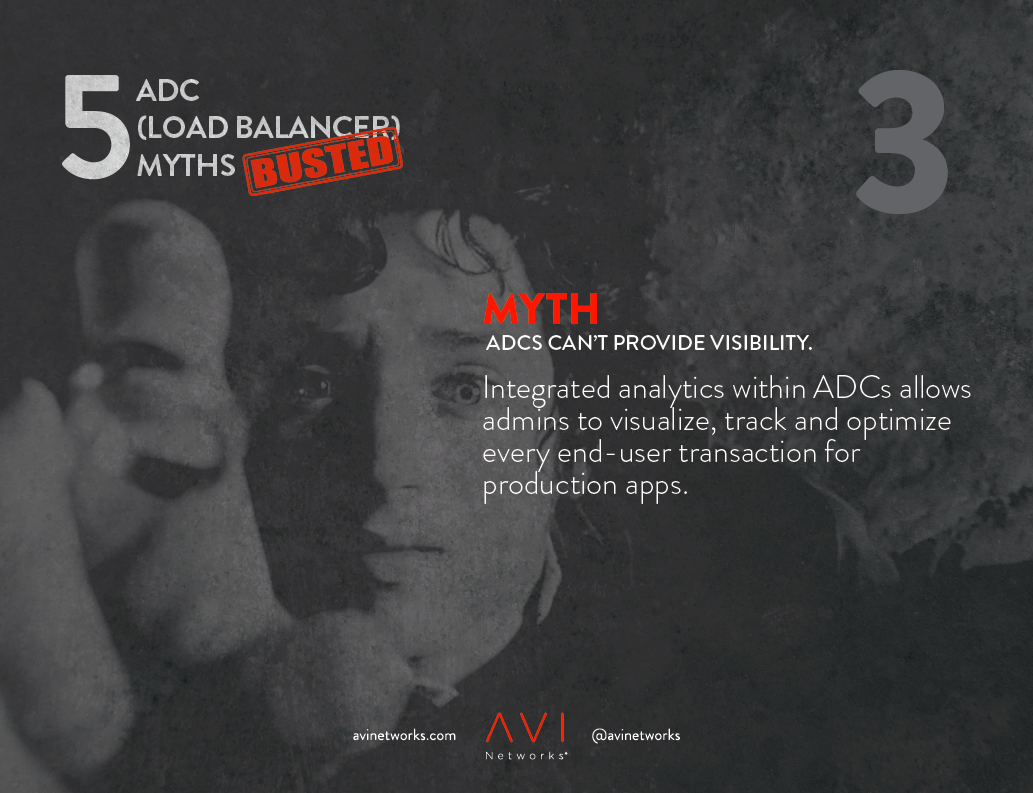Applications are an important part of your business strategy to drive great customer interactions. Often times, the P&L outcomes for lines of business are directly tied to the successful troubleshooting of application issues in a timely manner. Beyond configuring application services such as load balancing, IT pros find that they need to invest in a whole bunch of tools when servicing their internal customers' needs for application troubleshooting and performance data. These include tools to gain visibility into the end user experience for that application, network monitoring tools, aggregation taps, and application performance monitoring solutions. The painful task of piecing together data from such disparate point solutions takes several days if not weeks and does not present a reliable or repeatable process for IT and operations teams. On the other hand, the application owners are left waiting for data that they need quickly to debug issues.

RE-ARCHITECTING THE ADC TO GET MORE VALUE
Application Delivery Controllers (ADCs) occupy an important position on the network. But legacy appliance based ADCs with both management and service delivery capabilities cobbled together into a monolithic appliance have been so focused on not being a bottleneck, that they have not taken advantage of their "location privilege" to deliver better value. Instead, what if you could architect an application services platform that is fully implemented in software with a separate point of control from distributed points of delivery for application services in your environment? This is the concept behind the Avi Vantage Platform. The platform consists of the central Avi Controller and distributed, elastic micro-ADCs called Avi Service Engines that are sprinkled across the environment to deliver services closest to the application.
THE ADC IS NOW EMPOWERED
The Avi Service Engines provide data plane services of load balancing, health monitoring, content optimization, content transformation and application security. They also serve as beacons to analyze and report data about every application transaction to the Avi Controller. Avi Service Engines are co-located with applications on standard x86 servers, forming a distributed service fabric and providing comprehensive application delivery services close to the respective applications. The ADC can finally do more than just passive packet pushing.
VISIBILITY THROUGH INLINE ANALYTICS:
With this architecture, actionable application insights about end-user experience, application performance, infrastructure utilization, and anomalous behavior are gathered through the inline analytics reported by the Avi Service Engines. The Avi Vantage platform processes terabytes of traffic flowing through the data plane pipelines. High efficiency filters discard all but the most significant analytics data points and logs. Key metrics are then aggregated and streamed to the analytics engine on the Avi Controller using compression, variable length encoding and a wire protocol in an efficient yet extensible format. In the demo below you can quickly see how powerful these analytics are:
Yes, the ADC can indeed give the gift of visibility - load balancers with powerful analytics to provide that visibility do exist. This myth has been officially busted! Get the Avi Vantage Platform datasheet to learn more.


